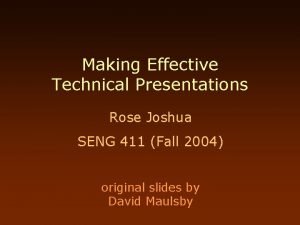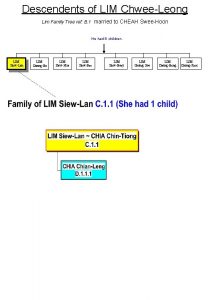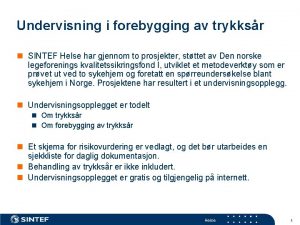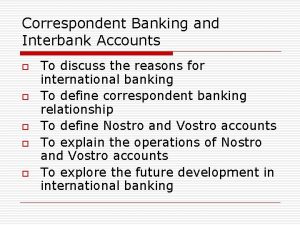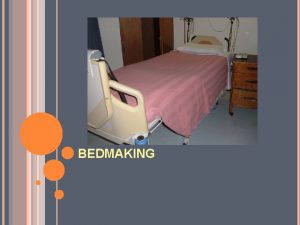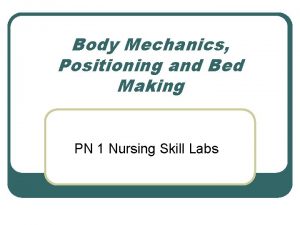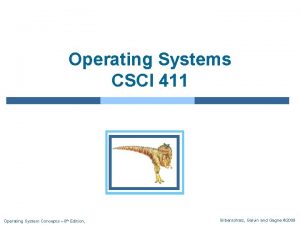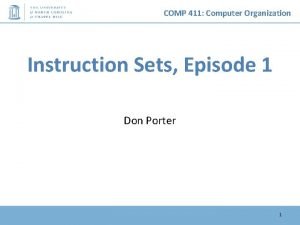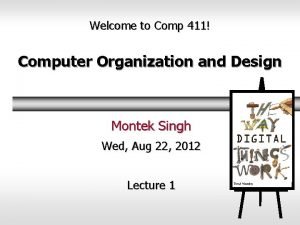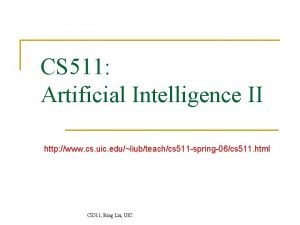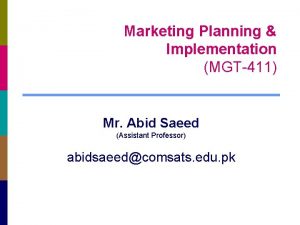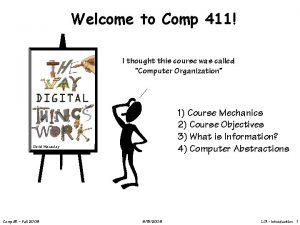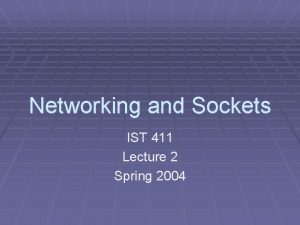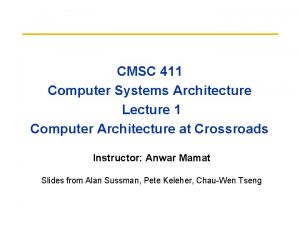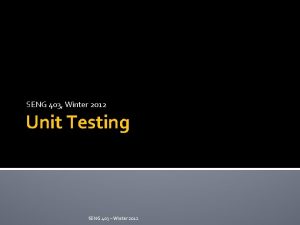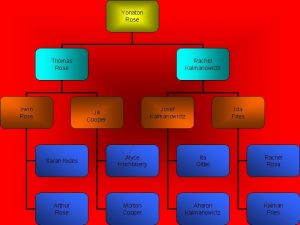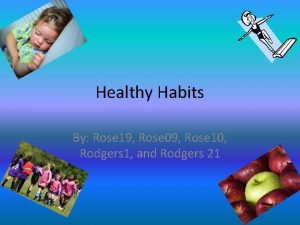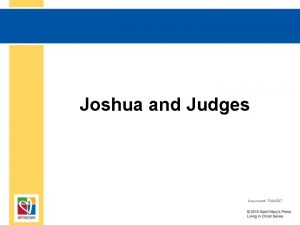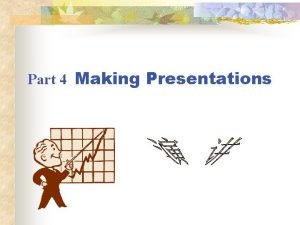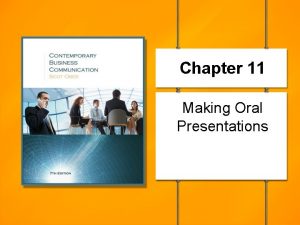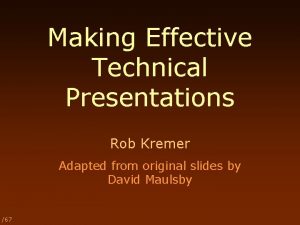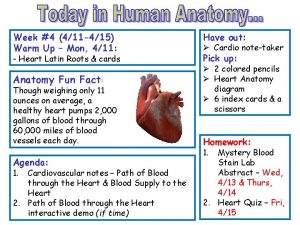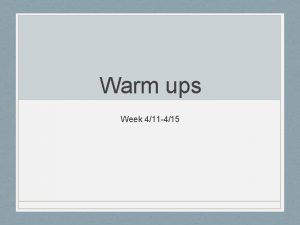Making Effective Technical Presentations Rose Joshua SENG 411























































- Slides: 55

Making Effective Technical Presentations Rose Joshua SENG 411 (Fall 2004) original slides by David Maulsby

Why Presentations? Ø Incite decisions Ø Achieve closure Ø Motivate, educate Ø Build relationships

Why Be a Presenter? Ø Make contacts Ø Promote yourself Ø Promote your organization Ø Master your subject

Your Objectives Ø Establish your authority to speak Ø Motivate the importance of your subject Ø Make your case, teach the audience Ø Follow-up with key players

Planning a Presentation

The Presentation Process Preparation Presentation Research Audience Introduce Speaker Select Material Introduce Topic Prepare Visuals Develop Ideas Write Text Answer Questions Rehearse Draw Conclusions

Understanding the Audience Research Audience Introduce Speaker Select Material Introduce Topic Prepare Visuals Develop Ideas Write Text Answer Questions Rehearse Draw Conclusions

Audience Composition Ø The Chair Ø The Head Honcho Ø The Critic Ø Your Champion Ø The Masses Research Audience Select Material Prepare Visuals Write Text Rehearse

The Chair Their Role ØKeeps the meeting on track ØProtects the speaker & You ØEstablish your relationship ØRefer problems to the chair Research Audience Select Material Prepare Visuals Write Text Rehearse

The Head Honcho Role ØDecision-maker & You ØMake sure s/he understands ØMarshall the audience to help you Research Audience Select Material Prepare Visuals Write Text Rehearse

The Critic Their Role ØTo debunk your story & You ØAnticipate objections in your talk ØHave extra slides ready ØRehearse questions and answers ØCounteract with your champion Research Audience Select Material Prepare Visuals Write Text Rehearse

Your Champion Their Role ØAdvocate for you & You ØIdentify your champion ØAttentive, nodding, interested questions ØGet his/her endorsement ØThird-party more believable Research Audience Select Material Prepare Visuals Write Text Rehearse

The Masses Their Role ØA. Keen to learn, validate ØB. There on orders, bored & You ØAcknowledge them ØEarn their trust ØAppeal to their experience Research Audience Select Material Prepare Visuals Write Text Rehearse

Understanding the Audience Ø What do they know about the topic? Ø What do they know about you? Ø Why are they in this meeting? Research Audience Select Material Prepare Visuals Write Text Rehearse

Respecting the Audience Research Audience Select Material Prepare Visuals Write Text Rehearse

Dress Code Dress to flatter your audience ØFor peers, dress up a little ØFor management, business casual ØFor customers, dress for success ØJacket and tie ØYou’re judged by your shoes Research Audience Select Material Prepare Visuals Write Text Rehearse

Dress Code “But I’m a poor student, I only have T-shirts!” So what would you wear to a wedding? Research Audience Or a funeral? Select Material Prepare Visuals Write Text Rehearse

Clothing Communiqué Clothing sends messages ØWhat you wear ØHow you wear it ØManners and gestures Research Audience Select Material Prepare Visuals Write Text Rehearse

Professional Deportment Ø Watch your language ØNo slang ØAvoid grandiloquent sesquipedalian circumlocutions Ø Watch your body language ØRelaxed, not sloppy Research Audience Select Material Prepare Visuals Write Text Rehearse

The Best Proof of Respect Be prepared ! ØYou studied your topic ØYou researched the audience ØYou rehearsed your presentation Research Audience Select Material Prepare Visuals Write Text Rehearse

Selecting Material Research Audience Introduce Speaker Select Material Introduce Topic Prepare Visuals Develop Ideas Write Text Answer Questions Rehearse Draw Conclusions

Selecting the Content Ø Help your audience reach their objectives ØUnderstand an issue ØAnswer a question ØMake a decision Ø Focus on what they need to learn Research Audience Select Material Prepare Visuals Write Text Rehearse

Organizing the Talk Ø Acknowledge the objectives Ø Yours and theirs Ø Establish common ground Ø From You and Them to We Ø Provide a roadmap Ø Outline / graphic Ø “Say what you’re going to say…” Research Audience Select Material Prepare Visuals Write Text Rehearse

Visual Aids Research Audience Introduce Speaker Select Material Introduce Topic Prepare Visuals Develop Ideas Write Text Answer Questions Rehearse Draw Conclusions

Visual Aids Ø Graphics reveal relationships Introduce Speaker Introduce Topic Develop Ideas Answer Questions Research Audience Select Material Draw Conclusions Prepare Visuals Write Text Rehearse

Visual Aids Ø Introduce speaker Ø Introduce topic Ø Develop ideas Ø Answer questions Ø Draw conclusions Research Audience Select Material Prepare Visuals Write Text Rehearse

Visual Aids Introduce Speaker Introduce Topic Develop Ideas Answer Questions Draw Conclusions Research Audience Select Material Prepare Visuals Write Text Rehearse

Color Schemes Bad Good Too Little Contrast Good Contrast Complementary Colors OK for Accent; Tiring Too Many Colors Best for Colorful Diags Ø Use very dark or very light background Ø High contrast Ø Avoid red, green Research Audience Select Material Prepare Visuals Write Text Rehearse

Color Connotations Formal and methodical Cool and rational Mysterious and intriguing Exciting marketing message Another exciting message Research Audience The plain old facts Select Material Prepare Visuals Write Text Rehearse

Special Effects Research Audience Select Material Prepare Visuals Write Text Rehearse

Effects Ø Illustrate relationships, processes Ø Favorite of s a l e s m e n ØDemos make effects unnecessary Research Audience Select Material Prepare Visuals Write Text Rehearse

The Text Research Audience Introduce Speaker Select Material Introduce Topic Prepare Visuals Develop Ideas Write Text Answer Questions Rehearse Draw Conclusions

Slide Formatting Ø One topic per slide Ø Minimal text ØGraphics where possible Ø 3 points Research Audience Select Material Prepare Visuals Write Text Rehearse

Rehearsal Research Audience Introduce Speaker Select Material Introduce Topic Prepare Visuals Develop Ideas Write Text Answer Questions Rehearse Draw Conclusions

Practice, Practice Ø Rehearse to a live audience ØOnce is not enough! Ø Practice the mechanics ØSet up ØRoles and signals ØIntroducer, speaker, slide controller Research Audience Select Material Prepare Visuals Write Text Rehearse

Giving the Presentation Research Audience Introduce Speaker Select Material Introduce Topic Prepare Visuals Develop Ideas Write Text Answer Questions Rehearse Draw Conclusions

Remember… Ø You’ve been granted the privilege of speaking Ø Your audience is spending a lot of valuable time on you Ø The speaker is remembered long after what s/he says is forgotten Introduce Speaker Introduce Topic Develop Ideas Answer Questions Draw Conclusions

The Speaker Research Audience Introduce Speaker Select Material Introduce Topic Prepare Visuals Develop Ideas Write Text Answer Questions Rehearse Draw Conclusions

Introductions Ø Have the chair introduce you ØImplicit endorsement Ø Greet and acknowledge the audience Ø Introduce your team Introduce Speaker Ø Your qualifications Introduce Topic Develop Ideas Answer Questions Draw Conclusions

Presenting Yourself Ø Speak up! ØSelf-confidence Ø Speak smoothly ØHesitation, nervousness implies incompetence Ø Eye contact ØHonesty, trust Introduce Speaker Introduce Topic Develop Ideas Answer Questions Draw Conclusions

Coping with Nerves Ø Shake ‘em off Ø Be well prepared Ø Nothing new Ø Backups Ø Thank the audience Ø Find a friend Ø Stand tall Introduce Speaker Introduce Topic Develop Ideas Answer Questions Draw Conclusions

The Topic Research Audience Introduce Speaker Select Material Introduce Topic Prepare Visuals Develop Ideas Write Text Answer Questions Rehearse Draw Conclusions

Set the Agenda Ø Desired outcome of this meeting? Ø Why is this talk important NOW? Ø Why are you the ideal presenter? Introduce Speaker Introduce Topic Develop Ideas Answer Questions Draw Conclusions

The Material Research Audience Introduce Speaker Select Material Introduce Topic Prepare Visuals Develop Ideas Write Text Answer Questions Rehearse Draw Conclusions

Maintain the Pace Ø Watch your remaining time Ø Preserve time for questions ØDon’t invite audience to interrupt you Ø Skip rather than skim slides ØDon’t talk too fast Introduce Speaker Introduce Topic Develop Ideas Answer Questions Draw Conclusions

Interactions Research Audience Introduce Speaker Select Material Introduce Topic Prepare Visuals Develop Ideas Write Text Answer Questions Rehearse Draw Conclusions

Interaction Skills Ø Don’t block the slides Ø Scan the audience (eye contact) ØDon’t stare at your slides Ø Move into the audience Introduce Speaker Introduce Topic Develop Ideas Answer Questions Draw Conclusions

Interaction Skills Ø Vary your voice (level, pitch) Ø Talk with your hands ØGently Ø Invite participation ØLeading questions Introduce Speaker Introduce Topic Develop Ideas Answer Questions Draw Conclusions

Questions Ø What if nobody has any? Ø Plant questions in your text Ø Ask the audience ØSurvey says… Ø Have answers on “reserve slides” Introduce Speaker Introduce Topic Develop Ideas Answer Questions Draw Conclusions

Difficult Questions Ø What if you don’t know the answer? ØAdmit it ØPromise to follow-up ØCanvas the audience Ø What if the question is irrelevant? ØTake it off-line Introduce Speaker Introduce Topic Develop Ideas Answer Questions Draw Conclusions

Coping with Trouble Ø “Walk-on’s” (latecomers) ØGreet them Ø A speech from the floor A bulldog questioner ØTake it off-line Ø Turn to the chair for help Introduce Speaker Introduce Topic Develop Ideas Answer Questions Draw Conclusions

Summing Up Research Audience Introduce Speaker Select Material Introduce Topic Prepare Visuals Develop Ideas Write Text Answer Questions Rehearse Draw Conclusions

Presentation Strategies Ø Profile your audience Ø Define your presentation goals and stick to them! Ø Prepare to convince and impress Ø No compromises! Introduce Speaker Introduce Topic Develop Ideas Answer Questions Draw Conclusions

Presentation Tactics Ø Establish common ground Ø Interact with audience Ø Maintain control of the floor Ø Show rather than tell Ø Work toward a conclusion Introduce Speaker Introduce Topic Develop Ideas Answer Questions Draw Conclusions

Questions Welcome! For more information, please contact Rose Joshua joshuar@cpsc. ucalgary. ca
 Joshua seng
Joshua seng James seng
James seng Lim bock seng family tree
Lim bock seng family tree Seng mun kong
Seng mun kong Bariatriske senge
Bariatriske senge Tan tiow seng
Tan tiow seng Seng na kub
Seng na kub Eid milad majid
Eid milad majid Plate type exchanger
Plate type exchanger 130 seng
130 seng Innovation seng
Innovation seng Leiring i seng
Leiring i seng Ang mo kio ttsh
Ang mo kio ttsh Hang seng bank correspondent bank
Hang seng bank correspondent bank Kevin seng
Kevin seng Chan beng seng
Chan beng seng Yeo hiap seng family tree
Yeo hiap seng family tree Effective body mechanics and bed making
Effective body mechanics and bed making Types of bed making
Types of bed making Guidelines for bed making
Guidelines for bed making Is making inference simply making a guess
Is making inference simply making a guess War making and state making as organized crime
War making and state making as organized crime Csce 411
Csce 411 účet 411
účet 411 411 disability disclosure
411 disability disclosure Csce 411
Csce 411 Cpsc 411
Cpsc 411 Csci 411
Csci 411 Csce 411
Csce 411 Nutritional assessment definition
Nutritional assessment definition Csce 411
Csce 411 Nutrition411
Nutrition411 Cpsc 411
Cpsc 411 411 database
411 database Rule 411
Rule 411 Opwekking 411 tekst
Opwekking 411 tekst Comp 411
Comp 411 Csce 411
Csce 411 Unc comp 411
Unc comp 411 Seo931
Seo931 Cpsc 411
Cpsc 411 Mgt 411
Mgt 411 Csce 411
Csce 411 Ist 411
Ist 411 I
I Ist 411
Ist 411 Ist 411
Ist 411 Cmsc 411 umd
Cmsc 411 umd Mgmt 411 purdue
Mgmt 411 purdue Dog breed 411
Dog breed 411 Comp
Comp Csc 411
Csc 411 Ece 411
Ece 411 411 database
411 database Cosmo spanish alphabet
Cosmo spanish alphabet Party 411
Party 411
